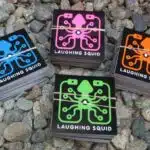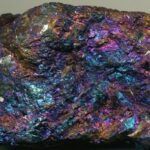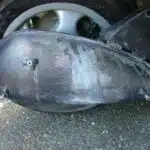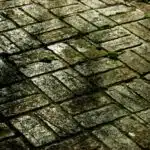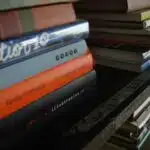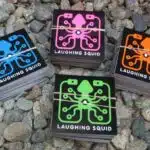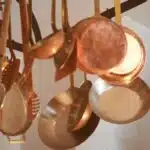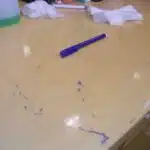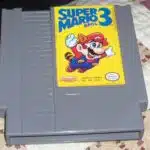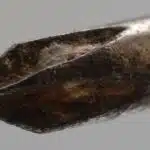Welcome to the world of metal restoration, where we breathe new life into old and rusty metals. As a metal restoration expert, I have spent years perfecting the art of removing rust from various types of metals. Rust is a common problem that affects most metals, especially those that are exposed to moisture and oxygen for extended periods. The good news is that this problem can be easily fixed with the right tools and techniques.
If you are looking for ways to remove rust from your metal objects, you have come to the right place. In this article, I will share with you my knowledge and expertise on how to effectively remove rust from metal. Whether you are dealing with a small rust spot or an entire rusty surface, I will guide you through the process step by step. With my help, you can restore your metal objects to their former glory and enjoy their beauty and functionality for many years to come. So let’s get started!
Understanding The Causes Of Rust
As a metal restoration expert, it never ceases to amaze me how something as simple as a little bit of water can wreak havoc on the durability of metal. Rust is a common problem that is caused by the reaction of iron and steel with oxygen and moisture in the environment. When exposed to these elements, a chemical reaction occurs which results in the formation of iron oxide – commonly known as rust.
The causes of rust are not limited to environmental factors alone. In fact, there are other factors such as high humidity levels or exposure to saltwater that can exacerbate rusting. Metal that has been scratched or dented also has an increased likelihood of developing rust as it provides an entry point for moisture to penetrate through and begin corroding the surface.
The effects of rust on metal durability cannot be understated. Not only does it weaken the structural integrity of the material but it also makes it more susceptible to cracks and fractures. Moreover, if left untreated, rust can spread quickly and cause irreparable damage to machinery, tools or even entire structures. Therefore, understanding the causes and effects of rust is crucial in preventing its occurrence and ensuring longevity for all types of metals.
Types Of Metals Affected By Rust
Different types of metals are affected by rust, but some are more prone to corrosion than others. For instance, ferrous metals such as steel and iron are highly susceptible to rust due to the presence of iron oxide in their composition. Non-ferrous metals like aluminum, copper, and brass are less prone to rusting since they lack iron.
Corrosion resistance is a significant factor when it comes to selecting metal for construction or manufacturing purposes. The ability of a metal to withstand rusting is dependent on its composition and environment. Rust prevention techniques such as coating the metal with anti-corrosive substances can be used to improve the lifespan of the metal.
To keep our metal items in good condition, it is essential to understand which types of metals are vulnerable to rusting and how we can prevent it. Some key takeaways include:
- Ferrous metals like steel and iron contain iron oxide that makes them highly susceptible to rust.
- Non-ferrous metals like copper and aluminum have less chance of rusting since they lack iron.
- Corrosion resistance is an important factor when choosing a type of metal for a specific purpose.
- Rust prevention techniques such as coatings can be applied to prolong the lifespan of metal items.
- Understanding which types of metals are prone to rust can help us take better care of our belongings.
Knowing which types of metals are more likely to rust helps us make informed decisions about how we maintain and preserve our possessions. Corrosion resistance plays an essential role in the longevity of our metal items, so it’s crucial that we use appropriate rust prevention techniques such as coatings or protective layers. In the next section, we will discuss the tools and materials required for removing rust from different types of metals effectively.
Tools And Materials Required For Rust Removal
Ah, rust – the worst enemy of metal surfaces. It can be frustrating to see your prized possessions deteriorate due to this pesky problem. But worry not, as a metal restoration expert, I am here to guide you through the process of removing rust from your precious metals.
Choosing appropriate and effective tools for rust removal is crucial. You will need a wire brush or sandpaper to remove loose rust and a chemical rust remover for tougher stains. A drill with a wire brush attachment can also come in handy for larger areas. Make sure to read the instructions carefully before using any chemical solutions.
Before starting rust removal, it is important to prepare the metal surface properly. Remove any dirt or debris from the surface using soap and water or a degreaser. Dry it thoroughly before proceeding. For larger surfaces, use a pressure washer if possible. Once clean and dry, cover any areas that you do not want to remove rust from with masking tape.
Now that you know how to choose the right tools and prepare your metal surface, you are ready to start removing rust. But before delving into that step, safety precautions must be taken into consideration.
Safety Precautions Before Starting
Before starting any metal restoration project, it’s essential to identify potential hazards and take the necessary safety precautions. Rust removal can expose you to harmful chemicals and materials that can cause serious harm if not handled appropriately. To ensure your safety, always wear protective gear such as gloves, goggles, and a respirator mask.
In addition to wearing the appropriate safety equipment, it’s crucial to identify all potential hazards in your workspace before beginning the rust removal process. This includes removing any flammable or combustible materials from the area and ensuring proper ventilation to avoid inhaling any fumes or dust particles that may be harmful. Always keep a fire extinguisher nearby in case of an emergency.
Ultimately, taking the necessary safety precautions is vital when working with rust removal solutions and tools. By wearing protective gear and identifying potential hazards in your workspace, you can reduce the risk of accidents and injuries while restoring your metal objects to their former glory. With these safety measures in place, you can confidently move on to our step-by-step guide for removing rust from small objects without risking harm or injury.
Step-By-Step Guide To Removing Rust From Small Objects
A common problem that metal restorers encounter is rust. It can be frustrating to see your favorite antique objects or jewelry slowly deteriorate due to rust buildup. Removing rust from small objects requires patience and attention to detail.
When removing rust from jewelry, it’s important to choose the right cleaning solution that won’t damage the metal. A gentle solution of vinegar and baking soda can work wonders for removing surface-level rust without causing any harm. For more stubborn rust, a mixture of lemon juice and salt can help break down the rust particles, making them easier to remove.
For antique objects, it’s important to take extra care when removing rust as they may be fragile and easily damaged. One effective method is using a wire brush or sandpaper to gently remove the rust, being careful not to scratch or damage the object further. For more delicate antiques, using a chemical rust remover may be necessary but should only be done with caution and following manufacturer instructions.
Now that we’ve covered some basic methods for removing rust from small objects, let’s move on to a step-by-step guide for tackling larger surfaces.
Step-By-Step Guide To Removing Rust From Large Surfaces
As metal restoration experts, we have seen a lot of rust over the years. We’ve seen it on small objects and we’ve seen it on large surfaces. If you’re dealing with a large surface, there are some best practices that you should follow to ensure that you get the job done right.
First and foremost, it’s important to remember that removing rust from a large surface is not something that you can do quickly or easily. It takes time, effort, and patience. One common mistake that people make when trying to remove rust from large surfaces is rushing through the process. They may try to use harsh chemicals or abrasive tools in an attempt to speed things up, but this can actually do more harm than good.
When it comes to removing rust from large metal objects, you have two options: DIY or professional removal. If you’re confident in your abilities and have the necessary tools, then doing it yourself can be a cost-effective solution. However, if you’re dealing with a particularly large or difficult surface, it may be best to bring in the professionals. They have access to specialized equipment and know the best techniques for getting rid of even the toughest rust.
If DIY is your preferred method of rust removal for large surfaces, stay tuned for our next section where we will discuss using chemical rust removers. These products can be effective when used correctly, but there are some important things to keep in mind before diving in. Remember – taking your time and following best practices will ensure that your large metal object looks as good as new once again!
Using Chemical Rust Removers
Chemical rust removers are an effective way to clean rust off metal surfaces. These removers come in a wide range of formulas and strengths, allowing users to select the right one for their specific needs. They work by breaking down the rust molecules, making it easier to remove them from the surface of the metal. One of the primary benefits of using chemical rust removers is that they’re fast-acting and can often remove rust within minutes.
When selecting a chemical rust remover, it’s important to consider its strength and corrosiveness. Some removers contain harsh chemicals that can damage certain types of metal or cause skin irritation if not used properly. It’s essential to read labels carefully and follow all safety instructions when using these products.
Alternative methods such as sandblasting or grinding can be effective but may be too aggressive for delicate materials like antique metals or thin sheets of metal. The best chemical removers are those that effectively remove rust without damaging the underlying metal surface. Some popular options include:
- Evapo-Rust: This non-toxic formula is safe for use on all types of metals and can be reused multiple times.
- CLR Calcium Lime Rust Remover: While primarily designed for use on hard water stains, this product can also effectively remove light surface rust.
- Naval Jelly Rust Dissolver: This thick gel-like formula is great for vertical surfaces as it clings well and doesn’t drip.
Chemical rust removers offer a quick and easy solution for removing unwanted rust from metal surfaces. However, if you prefer a more natural approach or have concerns about using harsh chemicals, there are alternative methods available that use natural ingredients to remove rust.
Using Natural Rust Removers
Chemical rust removers are a popular choice for those looking to restore metal surfaces to their original condition. However, some people prefer to use natural rust removers, which are often less harsh and can be more environmentally friendly. While chemical rust removers can be effective, they may also require careful handling and can be costly. On the other hand, using natural rust removers can offer a more affordable and safer alternative.
DIY vs professional rust removal is another factor to consider when choosing how to remove rust from metal. DIY rust removal methods include using household items such as vinegar, baking soda or lemon juice. While these methods may work in some cases, they may not be effective on heavily corroded or large areas of metal. Professional rust removal services often use specialized equipment and techniques that can effectively remove rust without damaging the underlying metal.
The effectiveness of natural rust removers depends on several factors such as the severity of the rust and the type of metal being treated. Some natural ingredients that can be used for removing rust include citric acid, molasses or even potato peels. While these methods may take longer than chemical options, they are generally considered safer and gentler on metal surfaces. However, it is important to note that not all natural rust removers may work for every situation.
To prevent future corrosion from forming on your metal surfaces, there are several steps you can take. One option is to apply a protective coating such as paint or clear sealant. Another option is to keep the surface clean and dry by wiping it down regularly with a dry cloth or applying a moisture-blocking agent such as WD-40. By taking preventative measures, you can help ensure that your metal surfaces stay looking like new for years to come.
Preventing Rust From Forming In The Future
- Regular cleaning of metal is one of the most important steps in preventing rust from forming in the future.
- Protective coatings such as paint, oil, wax, or corrosion-resistant alloys should be applied to exposed metal surfaces to reduce the risk of rust formation.
- Rust should be removed as soon as possible by using rust-removal chemicals, abrasive materials, or sandblasting.
- Regular inspection of metal surfaces and prompt repairs of any damage to paint, rust inhibitors, and coatings can help protect the metal from rusting in the future.
Clean Metal Regularly
Regular cleaning of metal is an essential step in preventing rust from forming in the future. An accumulation of dirt, grime, and moisture on metal surfaces creates a conducive environment for rust to form. To avoid this, it is necessary to clean metal regularly to remove any foreign substances that may cause rust. The benefits of regular cleaning are manifold. It helps maintain the aesthetic appeal of metal surfaces while also extending their lifespan.
However, there are common mistakes that people make when cleaning metal that can lead to rust formation. Using abrasive cleaning solutions or tools can scratch the surface of the metal and remove its protective coating. This makes it easier for moisture to penetrate and cause rusting. Similarly, using too much water during cleaning can also contribute to rust formation. Therefore, it is important to use gentle cleaning solutions and tools while avoiding excessive amounts of water.
In conclusion, if you want your metal objects to remain free from rust, then regular cleaning is crucial. By doing so, you can maintain their shine and improve their longevity. Be sure to avoid common mistakes such as using abrasive cleaners or excessive amounts of water during cleaning as these can lead to premature rust formation. With proper care and maintenance, your metal objects will continue serving you for years without any signs of rusting.
Apply Protective Coatings
To further prevent rust from forming on metal surfaces, another effective method is to apply protective coatings. These coatings act as a barrier between the metal and the elements, preventing moisture and other corrosive substances from reaching the surface. The benefits of applying protective coatings are numerous. Firstly, they can significantly extend the lifespan of metal objects by reducing their susceptibility to rusting. Secondly, they can enhance the appearance of metal surfaces by providing a glossy finish that adds to their aesthetic appeal.
However, it is important to note that there are also some drawbacks to using protective coatings. For instance, some coatings may require specialized equipment or expertise to apply properly. Additionally, certain types of coatings may not be suitable for use in specific environments or on certain types of metals. Furthermore, applying protective coatings may require more time and effort than regular cleaning alone.
If you prefer not to use protective coatings, there are alternative methods that you can consider to protect your metal objects from rust formation. One such option is to store them in a dry environment or wrap them in materials that absorb moisture such as silica gel packets or desiccants. Another option is to use rust inhibitors which can be applied directly onto metal surfaces and work by neutralizing any corrosive substances present on the surface.
In summary, applying protective coatings is an effective way of preventing rust formation on metal surfaces. However, it is important to weigh up the benefits and drawbacks before deciding whether this method is right for you. If you choose not to use protective coatings, there are alternative methods available that can also help protect your metal objects from rusting in the future.
Maintaining The Appearance Of Restored Metal
After restoring the metal to its former glory, it is essential to maintain its appearance. Maintaining metal can be a daunting task. However, with a little effort and attention, it can be accomplished. Here are some tips for ongoing metal maintenance.
Firstly, always keep the object dry and free from moisture as much as possible. Moisture causes rust to form on the surface of the metal. Secondly, apply a protective coating to prevent rust from forming again. Choosing the right protective coatings depends on the type of metal that needs maintenance. For example, if you are maintaining copper or brass objects, use wax-based coatings as they offer excellent protection against corrosion and tarnish.
Lastly, regular cleaning is crucial in maintaining metal objects’ appearance. Use a soft cloth or sponge to wipe off any dirt or dust accumulated on the surface of the metal. Avoid using abrasive cleaners or steel wool as they can scratch or damage the surface of the metal.
In summary, maintaining restored metal requires effort and attention to detail. Keep objects dry and moisture-free, apply appropriate protective coatings depending on the type of metal being maintained, and regularly clean them using gentle means. By following these simple steps for ongoing maintenance, you can enjoy your restored metals for years to come without worrying about their appearance fading away due to neglect or misuse.
Common Mistakes To Avoid During The Rust Removal Process
Imagine you are restoring a piece of metal and have already gone through the process of removing rust. However, your efforts may go in vain if you make common mistakes during the rust removal process. Over sanding and using wrong tools can lead to irreversible damage to the metal, making it impossible to restore its original state. Therefore, it is crucial to approach the rust removal process with care and precision.
One common mistake people make is over sanding the metal surface while trying to remove rust. This not only removes the rust but also damages the metal underneath, leading to dents and scratches on the surface. Another mistake is using wrong tools that are too abrasive for delicate surfaces or too weak for stubborn rust stains. It’s essential to use proper equipment for each specific task as recommended by experts.
Preventing rust is just as important as removing it from your metal objects. Proper storage and regular maintenance can significantly reduce the chances of rust formation on your precious items. Storing metal objects in dry areas free from moisture can prevent oxidation from occurring, which leads to rust formation. Regular maintenance involves cleaning your objects regularly with a soft cloth and mild detergent, which removes any contaminants that could lead to corrosion.
In summary, taking care of your metal objects requires both preventing rust formation and addressing it when it occurs. Common mistakes such as over sanding or using wrong tools can lead to irreversible damage during the rust removal process. By practicing proper storage and regular maintenance techniques, you can prevent corrosion altogether. But when faced with stubborn rust stains despite all precautions taken, there are still steps you can take to get rid of them effectively without causing further damage – read on!
Dealing With Stubborn Rust Stains
Removing rust from metal can be a daunting task, especially when it comes to dealing with stubborn rust stains. These stains are often caused by prolonged exposure to moisture, which leads to the formation of iron oxide. Iron oxide is a reddish-brown compound that is notoriously difficult to remove from metal surfaces. However, there are several effective methods for removing stubborn rust stains.
One method is to use a chemical rust remover. These products contain acidic compounds that dissolve the iron oxide, making it easier to remove. Simply apply the product to the affected area and let it sit for the recommended time before wiping it away with a cloth or scrubbing it with a brush. Be sure to follow the instructions on the product carefully and wear protective gloves and eyewear.
Another method is to use an abrasive material such as sandpaper or steel wool. This method involves physically removing the rust stain by scrubbing it away with an abrasive material. Be sure to use a fine-grit sandpaper or steel wool and work in small circular motions until the stain is removed. This method can be effective but also runs the risk of damaging the surface of the metal.
| Method | Pros | Cons |
|---|---|---|
| Chemical Rust Remover | Effective at dissolving rust stains | Can be dangerous if not used properly |
| Abrasive Materials (e.g., Sandpaper, Steel Wool) | Physically removes rust stains | Runs risk of damaging metal surface |
In addition to these methods, it’s important to take preventative measures to avoid future rust stains. When working with metal tools or objects, be sure to dry them thoroughly after use and store them in a dry place. Additionally, if you’re dealing with rusty items near fabric or clothing, cover them with plastic or another protective material to prevent rust stains from transferring onto your clothes.
With these tips in mind, you’ll be well-equipped to tackle stubborn rust stains on metal surfaces. In the next section, we’ll discuss specific methods for removing rust from different types of metals, including iron, steel, and aluminum.
Removing Rust From Specific Types Of Metal (E.G. Iron, Steel, Aluminum)
Dealing with stubborn rust stains can be quite frustrating, especially when they seem to resist all attempts at removal. However, with the right cleaning techniques and abrasive materials, even the toughest rust stains can be eliminated. One effective method is to use a wire brush or sandpaper to scrub away the rust from the metal surface. For more severe cases of rust buildup, a chemical rust remover may be necessary.
When removing rust from specific types of metal, it’s important to consider the unique properties of each material. For example, iron is prone to rusting due to its high carbon content and should be cleaned using an acidic solution such as vinegar or lemon juice. Steel, on the other hand, is less susceptible to corrosion but may require a stronger abrasive material like steel wool or sandblasting for effective cleaning. Aluminum is highly reactive and requires special care during cleaning to avoid damaging its surface.
Cleaning techniques and abrasive materials play a crucial role in removing rust from metal surfaces. However, if you’re not confident in your ability to tackle a particularly stubborn stain or have concerns about damaging your metal object, it’s best to hire a professional for rust removal services. These experts have specialized equipment and knowledge that allows them to effectively remove even the most stubborn rust stains without causing any harm to your valuable possessions.
Hiring A Professional For Rust Removal Services
As a metal restoration expert, I recommend hiring a professional for rust removal services. While DIY methods can be tempting due to their lower cost, they often fall short in terms of effectiveness and safety. Professional rust removal offers numerous benefits that make it worth the investment.
Firstly, professional rust removal services use industrial-grade equipment and techniques that are not available to the average person. This allows them to remove rust more thoroughly and quickly than DIY methods. Additionally, professionals have extensive knowledge and experience in dealing with different types of metals and rust, ensuring that your item is treated properly without damaging it further.
Secondly, while DIY methods may seem cheaper at first glance, they often end up costing more in the long run. If done improperly, DIY rust removal can cause irreparable damage to your item, leading to costly repairs or replacements. In contrast, professional rust removal ensures that your item is properly restored without any further damage.
Lastly, professional rust removal saves you time and effort. Rather than spending hours trying out different methods with uncertain results, you can simply leave it to the experts who will get the job done efficiently and effectively.
In summary, the benefits of professional rust removal far outweigh any initial cost comparison with DIY methods. Not only does it offer superior results, but it also saves you time and money in the long run. If you want your metal item restored properly without any damage or hassle on your part, then hiring a professional for rust removal services is the way to go.
Moving forward into frequently asked questions about rust removal: , here are some common queries and their answers:
Frequently Asked Questions About Rust Removal
Rust removal is a common issue faced by many metal restoration enthusiasts. With the right knowledge and tools, it can be an easy task to remove rust from metal surfaces. However, it is always important to know when to seek professional help for severe cases of rust damage.
For those who prefer a DIY approach, there are several techniques that can be used to remove rust from metal surfaces. One of the most popular methods is using a mixture of baking soda and vinegar. Simply make a paste with equal parts baking soda and vinegar, apply it to the rusted area, and let it sit for several hours before scrubbing off with a brush or steel wool. Another effective method is using lemon juice and salt. The acid in the lemon juice combined with the abrasive salt helps break down the rust. Apply the mixture onto the rusted area, let it sit for a few hours, then scrub off with a brush.
While DIY rust removal techniques can be effective for minor cases of rust damage, it is important to know when to seek professional help. If there is extensive damage or if you are dealing with antique or valuable metals, seeking professional assistance may be necessary to avoid causing irreparable damage. Professional restoration experts have access to specialized tools and chemicals that may not be available for home use.
In summary, DIY rust removal techniques such as using baking soda/vinegar or lemon juice/salt can be effective for minor cases of rust damage on metal surfaces. However, severe cases of rust damage or antique/valuable metals should warrant seeking professional restoration services to prevent further damage from occurring.
Conclusion
Rust is a common problem that affects metals, and it can be frustrating to deal with. As a metal restoration expert, I have come across numerous cases of rust on different types of metals. Understanding the causes and types of metals affected by rust is crucial in identifying the appropriate tools and materials required for rust removal.
It is important to note that safety precautions should be taken before starting any rust removal process. This involves wearing protective gear such as gloves, goggles, and masks to avoid inhaling harmful fumes from chemicals used in removing rust.
Removing rust from small objects requires following a step-by-step guide while dealing with stubborn stains may require more effort. Different types of metals such as iron, steel, and aluminum may require specific methods of rust removal. In some cases where the damage is extensive, hiring a professional for rust removal services may be necessary.
In conclusion, understanding how to remove rust from metal is essential in preserving the quality and longevity of your metal objects. Following the appropriate techniques and safety precautions will ensure successful removal of rust stains. As a metal restoration expert, I advise anyone who encounters any form of rust on their metal object to take immediate action to prevent further damage.
Image Credits
- “Rust” by kevin dooley (featured)








